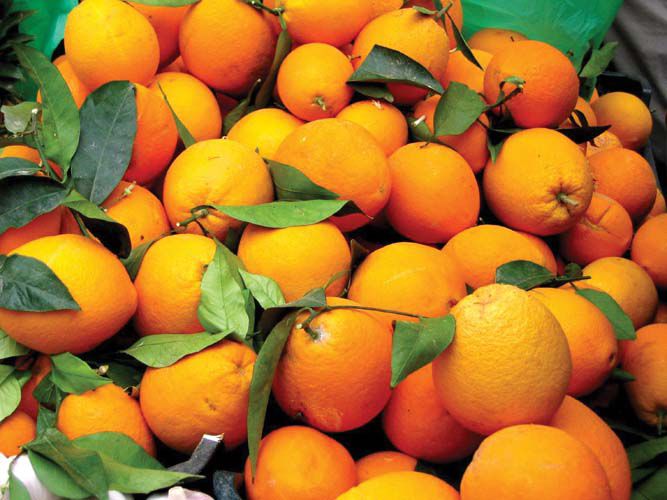
Most everyone with even a passing interest in watching their carbohydrate intake has heard of the Glycemic Index, and any number of versions are just a computer click away. These indexes measure the impact the sugar and starch content of carbs has on blood glucose (sugar) levels.
Put most simply, the lower the GI, the better.
But as is the case with many complicated topics, the Glycemic Index concept has been dumbed-down a bit, and a recent conversation with Melbourne endocrinologist Nikhita Dhruv was very illuminating.
Turns out, there are a number of factors besides baseline sugar and starch that affect the GI of specific foods that are little known – such as the fact that the longer you cook a vegetable, the higher the GI climbs.
First, a little background: Diets heavy with high-GI carbs carry a risk of raising blood glucose levels, which can lead to excess weight and type 2 diabetes – in which the body doesn’t use the insulin produced by the pancreas in the right way. At first, the pancreas makes extra insulin to make up for this failing, but as time passes, it can’t make enough insulin to keep the blood glucose at normal levels, resulting in health problems and the need for medication.
Melbourne’s Dr. Dhruv shared valuable – and perhaps not widely understood – insights about how the “age” of a food and its preparation can affect its ranking on the Glycemic Index and your body’s ability to digest and absorb the carbohydrates it contains:
Fruits that are riper tend to have higher GI levels. This is especially true of “starchy” fruits, such as bananas. As bananas ripen, their starches transform in a way that increases their potential to raise blood glucose levels. A green banana has a GI of about 40, compared to about 65 for a ripe banana (as the GI is typically measured on a scale of 1-100, that’s a big difference).
Opt for an orange rather than orange juice. An orange has a low-range GI of 35. However, orange juice, because it is stripped of the fruit’s natural fiber, has a mid-range GI of 45 (and that’s if it’s fresh squeezed and unsweetened; other preparation methods can catapult the GI to 70 or even higher).
The more you cook a vegetable, the higher the GI. Adding water and heat to vegetables raises their GI; as with ripening fruits, this has to do with the effect on the starch content. Carrots are a good example: a serving size has a low GI of 20 when raw but the GI rises to 50 for cooked carrots.
Here are a few additional tips for lowering the GI of some of your favorite foods:
Some methods for cooking vegetables are better than others. Not all vegetables can be eaten raw; potatoes being one example. Slow-cooking methods – baking and steaming – will result in lower GI levels than boiling and microwaving. Sautéing potatoes in olive oil is also a good preparation method, as the fat in the olive oil will slow down the body’s absorption of the carbohydrates, thereby lowering the GI. Retaining the potato’s skin will add some fiber, which lowers the impact of the potato’s starch on blood glucose levels.
Be careful about storing potatoes for a long time. If the right techniques are used, potatoes can be stored for months. However, long-term storage transforms their starches and raises their GI.
Cook pasta al dente. While pasta is not a low-GI food, it can be enjoyed in small portions even by those watching their carbs. Prolonged cooking (15 to 20 minutes) accelerates something called “starch gelatinization” and increases the pasta’s GI; much better is cooking it al dente (5 to 6 minutes).
It’s important to know that no matter what cooking methods are used, some carbohydrates have higher GIs than others. Here’s a website that will allow you to view foods that are low, medium and high on the Glycemic Index: www.montignac.com/en/search-for-a-specific-glycemic-index/#tab_.
Dr. Dhruv emphasizes that while a low-GI diet is important in the prevention and/or management of type 2 diabetes, it’s not the only significant factor – exercise is also key. When you exercise, your muscles use glucose, resulting in the lowering of blood glucose levels. Additionally, people with type 2 diabetes are at higher risk of heart problems, including blocked arteries (arteriosclerosis), which are generally debilitating and can lead to a heart attack. Exercise can help fend off this complication.
And, of course, medication is often used in conjunction with diet and exercise. A drug called metformin is generally the first medication doctors prescribe for the treatment of type 2 diabetes. It increases the sensitivity of the body’s tissues to insulin, thereby making the insulin work more effectively.
Dr. Dhruv is board-certified in endocrinology and practices as part of Medical Associates of Brevard. The office is located at 2290 W. Eau Gallie Blvd., Suite 100, in Melbourne; the office pfachone is 321-309-9000.



